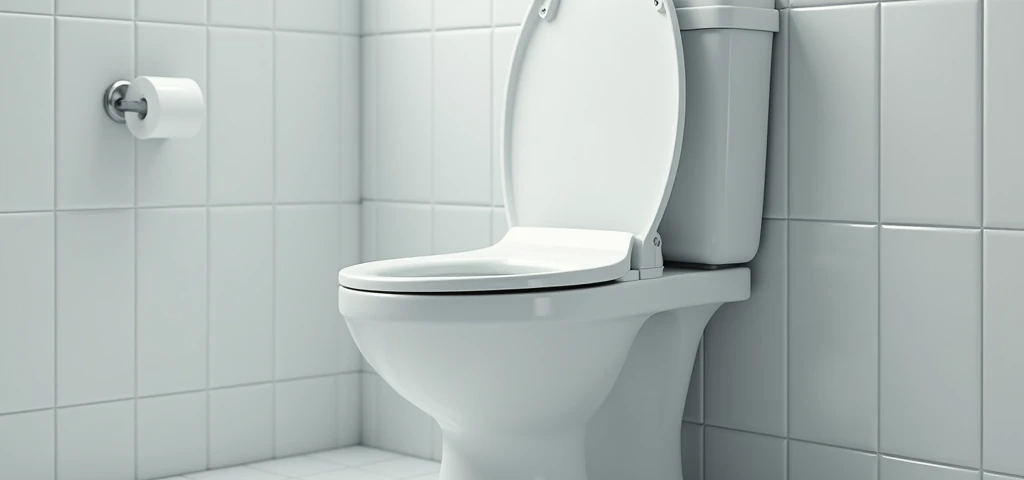How to Prevent the Toilet from Clogging When Nature Calls

The Benefits of Roof Coatings for Longevity and Protection
January 10, 2025
Step-by-Step Guide to Replacing a Kitchen Faucet
January 17, 2025Introduction
Dealing with a clogged toilet can be an inconvenient and unpleasant experience, especially when nature calls at the worst possible time. However, with a few preventative measures, you can avoid this common household issue and keep your plumbing in top shape. From proper flushing habits to regular maintenance, understanding how to prevent toilet clogs can save you time, frustration, and costly repairs.
1. Don’t Overload the Bowl
You must prepare the necessary equipment and supplies in advance in order to repair a kitchen faucet properly. These consist of a bucket or bowl, towels or rags, cleaning supplies, plumber's tape (sometimes called Teflon tape), an adjustable wrench or basin wrench, and flathead and Phillips screwdrivers. Above all, you'll need your new kitchen faucet and, if necessary, silicone sealant.
Possessing the appropriate equipment guarantees that the procedure proceeds without needless hiccups. Examine the space beneath your sink to make sure you have adequate room for work. Some of these instruments can frequently be leased from a nearby hardware store or borrowed from a neighbor if you don't already have them.
2. Upgrade to a Better Flush System
Outdated or weak flush systems can also struggle to handle the job, leading to frequent issues. Upgrading to a high-efficiency or dual-flush toilet can provide more flushing power and control, reducing the likelihood of clogs. Similarly, performing regular maintenance can keep your toilet in top shape. Monthly cleaning with a cup of vinegar in the tank can break down mineral deposits, while scheduling professional pipe cleaning once a year is especially beneficial for older homes.
3. Perform Regular Maintenance
Regular maintenance is essential for keeping your toilet functioning properly and preventing unexpected issues. Over time, mineral deposits, debris, and even small clogs can build up in the pipes, leading to slow drainage or complete blockages. A simple way to stay on top of this is by performing monthly cleanings. Pouring a cup of vinegar into the toilet tank can help dissolve mineral deposits and keep internal parts, like the flush valve, in good condition. In addition to regular cleaning, scheduling professional pipe inspections and cleaning at least once a year can ensure that everything is clear and functioning as it should. Taking a proactive approach to maintenance not only extends the lifespan of your toilet but also helps you avoid costly repairs down the line.
4. Educate Everyone At Home
Educating everyone in the household about proper toilet use is one of the most effective ways to prevent clogs and plumbing issues. Often, clogs occur when people unknowingly flush inappropriate items like excessive toilet paper, wipes, sanitary products, or even small toys. It’s important to make sure that everyone, from children to adults, understands what should and shouldn't be flushed down the toilet. By creating awareness and fostering good habits, you can minimize the risk of blockages and ensure that the toilet remains in good working order for everyone in the home.
5. Install a Toilet Plunger Holder Nearby
Having a toilet plunger within easy reach can be clutch when it comes to dealing with unexpected clogs. Instead of scrambling around the house looking for one when trouble strikes, installing a plunger holder nearby ensures that you're always prepared for emergencies. A plunger within arm's reach not only saves time but also reduces stress, allowing you to address the issue quickly before it becomes a bigger problem. Whether you place it in a discreet corner, on the back of the bathroom door, or in a cabinet, having this essential tool close by can provide peace of mind and help you handle those frustrating moments with ease.
6. Be Aware of Water Pressure Issues
Being aware of water pressure issues in your home is crucial for maintaining a properly functioning toilet. Low water pressure can lead to incomplete or ineffective flushes, which can result in clogs and buildup over time. If you notice that your toilet isn’t flushing with the usual force, it could be a sign that your water pressure is too low. In such cases, check your home's water pressure and address any underlying issues, such as a faulty valve, leaks, or sediment buildup in the pipes. Ensuring that your water pressure is at the optimal level helps prevent toilet malfunctions and ensures each flush works as it should, minimizing the risk of clogs and costly repairs.
7. Use Drain Cleaners Sparingly
While drain cleaners may seem like a quick fix for a clogged toilet or slow-draining pipes, it's important to use them sparingly. Many commercial drain cleaners contain harsh chemicals that can damage your plumbing over time, weakening pipes and causing potential leaks. Repeated use of these chemicals can also disrupt the balance of bacteria in your septic system, leading to more problems down the road. Instead, consider using enzyme-based cleaners that are gentler on your pipes and more effective at breaking down organic matter without causing long-term harm. Regular maintenance, such as flushing with hot water or vinegar, can also help prevent clogs naturally, reducing your reliance on chemical solutions. By using drain cleaners cautiously and opting for safer alternatives, you can protect your plumbing system and keep your toilet in good working condition.
Conclusion
Preventing toilet clogs is simple with the right habits and precautions. By using the correct amount of toilet paper, avoiding flushing non-flushable items, and performing regular maintenance, you can keep your toilet running smoothly. Taking these small steps not only helps prevent inconvenient blockages but also extends the lifespan of your plumbing system, ensuring a hassle-free bathroom experience whenever nature calls.


